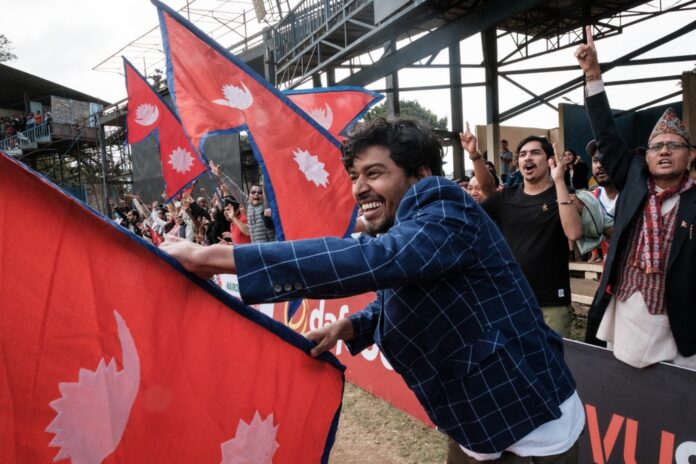Evidence of cricket’s deepening and widening appeal is apparent in its growth in an increasing number of countries. The game’s ability to generate occasions of high drama and tension is being witnessed in diverse locations.
Last week, this was nowhere more apparent than in Nepal, a country not normally considered a cricket playing nation in many people’s minds.
Until the 1980s, the game was a niche activity, limited to Kathmandu. A major development program, introduced in the early 1990s, boosted playing participation and facilities. This led to the first appearance of a Nepal men’s team in an international tournament, the Asia Cricket Cup, in 1996. In the same year, Nepal became an Associate member of the International Cricket Council. Steady growth in performance was rewarded with ICC T20I status in 2014 and ODI status in 2018.
This was achieved in dramatic fashion, something that has become a hallmark of Nepal’s cricketing personality.
Nepal needed to win its final match in a World Cup qualifying tournament and then hope that the Netherlands beat Hong Kong, which they did. All of this was against a backdrop of Nepal’s cricket board having been suspended by the ICC in 2016 for a breach of ICC regulation Article 2.9, which prohibits government interference and requires free and fair elections. Conditional readmittance was granted by the ICC in October 2019.
After ODI status had been secured, Nepal’s captain at the time, Paras Khadka, referred to “years and years of toil, persistence, sacrifices, commitment and hard work.” He also referred to the need to stabilize domestic structures, if ambitions to reach an ODI World Cup and even Test playing status, were to be realized. In 10 years since 2008, Nepal has risen from being in Division 5 to being within touching distance of the big players.
One factor that is not missing domestically is the level of fan support. Nepal is recognized as being the most fervently supported ICC Associate member. This fervor has spilled over on occasions. In February 2010, when Nepal looked to be losing a Division 5 match against the US, the crowd threw objects onto the field, causing an hour’s delay. This led to a revised target, which helped Nepal, who edged into Division 4 on net run rate at the expense of Singapore, who appealed. A conditional ban was imposed, with the height of stadium walls ordered to be increased. In December 2011, a similar crowd disturbance occurred in a match with the UAE, leading to a ban on hosting ICC events in 2012.
There was no ban in 2013, when Nepal hosted the Asia Cricket Cup, reaching the final, only to be beaten by Afghanistan. Crowds of between 15,000 and 20,000 were reported to have attended group stage matches, rising to 25,000 for the semifinal and final, which was free of crowd disruption.
Hundreds of thousands watched the match live on television. The explanation for such support may lie in the composition of the team, which comprises indigenous players, who have progressed through the age group ranks. It may also lie in the absence of ticketing arrangements in the past.
Although this was not the case for Nepal’s match against the UAE on March 16, 2023, it may as well have been, according to reports. The occasion was infused with expectation. It was the final match of 134 played in League 2 of the ICC 2023 ODI World Cup qualifying phase.
The outcome would finalize the third team which would progress to the next stage, one step away from playing in the World Cup in India in October and November. Scotland and Oman had finished first and second, with Namibia holding third place, one point ahead of Nepal.
In early February 2023, Nepal seemed to have little chance of making the third place, languishing in the second to bottom spot. The UAE were much better placed, but imploded in their last 10 matches, winning only three.
Surprisingly, their defeats included three by bottom team Papua New Guinea. Nepal, on the other hand, won 10 of its last 11 matches prior to the final match against the UAE, which was out of the running for third place.
Long queues formed several hours before the start of play. Later, people climbed the surrounding walls and trees, before the main gate and its defenders were breached. The Tribhuvan University Cricket Ground, Kirtipur, Kathmandu, is one of only two grounds to host international matches in Nepal. Its capacity is 18,000 but eyewitnesses suggest that more than 25,000 gained access to the ground. They were disappointed by the UAE’s progress, which saw a huge score of 310 being posted, including the fastest century by an ODI Associate cricketer.
In response to this mammoth target, Nepal lost three wickets cheaply, before rebuilding. A rain shower tightened the nerves of spectators, as Nepal was behind in the par score at that point. They became even more tense as they witnessed the UAE’s tactics to slow the game down.
Fears of disturbance rose. Some Nepalese players pleaded with supporters to stay calm. Then, at 5:37 p.m. local time, with 44 overs bowled, the umpires decided that it was too dark for play to continue. Nepal had scored 269 for six. According to the DLS system used to calculate interruptions to play, Nepal’s target at that point was 260. Another victory had been achieved in dramatic circumstances, against old foes, who were mightily displeased.
The UAE will now join a playoff competition in Namibia between March 26 and April 5. This comprises the bottom four teams in League 2, plus Canada and Jersey, who won feeder Challenger leagues.
ODI status is at stake for the UAE, since the two highest placed teams out of the UAE, Namibia, Canada and Jersey will secure ODI status for the 2023-2027 World Cup cycle. The UAE’s leading players participated in the DP World ILT20 League in January and February.
Since then, the team’s performance has stalled badly, whereas Nepal’s star has risen.

